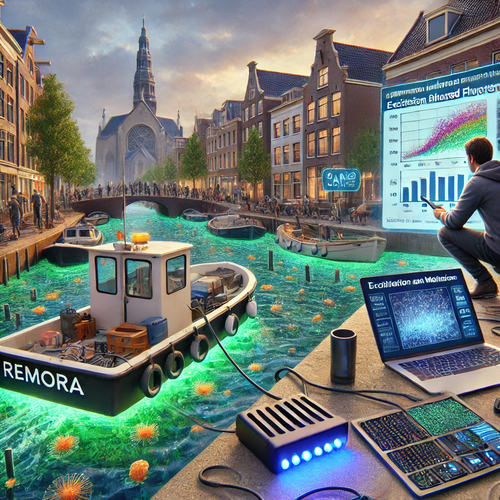Traditional monitoring by Waternet, the water authority of Amsterdam, involves fixed sampling locations, leading to low spatial coverage. However, HABs are hyper-local phenomena requiring more detailed monitoring. Inspired by MIT’s City Scanner project, researchers at the Senseable City Lab have designed a mobile, autonomous, low-cost spectrofluorometer called REMORA. REMORA can be placed on municipal boats to autonomously measure algae growth, increasing spatiotemporal coverage.
Functionality of the REMORA Sensor
REMORA uses LED-induced fluorescence to detect, quantify, and identify algae species. It emits light at specific wavelengths, exciting algae pigments that emit light, which is then measured to produce an Excitation Emission Matrix (EEM). The research explores machine learning techniques to enhance the classification of algae species using EEM data.
Initial Results
- Initial results show the effectiveness of using Convolutional Neural Networks (CNNs) for recognizing patterns in EEMs.
- Simpler models have been found to perform better than more complex ones, as the latter tend to overfit the data, leading to worse performance.
- Implementing a semi-supervised learning strategy has shown potential in reducing the amount of labeled data needed, making the data analysis process more efficient and scalable.
Future Directions
- The team is currently working on a next version of the sensor, aiming for a fully autonomous sensor that can make measurements every couple of minutes.
- The REMORA sensor aims to provide this data in real-time, which users can then access, for example, on their smartphone. Future developments include automating data collection and other app features to enhance usability and efficiency.
Conclusion
The REMORA sensor represents a significant advancement in monitoring Harmful Algae Blooms in Amsterdam's canals. By leveraging mobile, autonomous technology and integrating machine learning, REMORA addresses the limitations of current monitoring strategies, offering a cost-effective, high-resolution solution to improve water quality and manage the impacts of climate change on urban water bodies.
